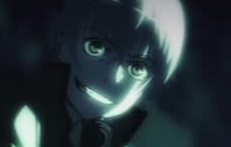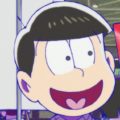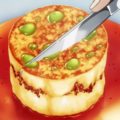Not Bad, but No KO- Megalo Box

There’s something to be said about a good underdog story, about the scrappy giving the established champion a run for the money, with sports anime being a perfect place to exemplify the trope. When it comes to boxing, perhaps the most well known anime is the older series “Hajime no Ippo,” split up into 3 separate seasons. I had watched a few episodes and from what I saw, it seemed to be a solid series. Perhaps not my cup of tea, but solid nonetheless, and quite long, with all 3 seasons totaling 127 episodes, plus an OVA and movie. Much more manageable for a boxing series is “Megalo Box,” at only 13 episodes long, and was the result of a friend’s recommendation. Sporting an appearance straight out of the comic series “The Boondocks,” (especially the main character’s hairstyle) how did this underdog story fare?
Given that I have almost no interest in sports themselves, the sports anime that I have come to grow fond of were due to underlying messages in the anime itself. For “Free,” it was the message of friendship and teamwork, plus overcoming self-doubt. For “Yuri on Ice,” it was the message of overcoming social anxiety. For “Giant Killing,” it was the tactical aspect, being the underdog, and finding weaknesses in your opponent. For “Megalo Box,” it seemed to be a parallel with “Giant Killing,” being the underdog and overcoming the odds, going from nothing to everything in no time at all.
It’s perhaps one of my favorite tropes, but for some reason, as I progressed through the series, I found myself liking, though not loving, it. The appearance of the show has been described to me as “very 90s,” and I can feel vibes of that. The look is somewhat, though not overly, angular, and there is some quite good shading and shadow work done here. Colors are very matte and low in saturation, mostly consisting of browns and greys. However, despite the lack of contrast, the look perfectly establishes and suits the mood. It’s very somber, dark, and a bit gritty. It highlights how “in the shadows” the world in which the characters are established and the dark side of human nature. Every character in here has a backstory and reason for fighting, and when one sees the administrative and bureaucratic side of this world and how the tournament is arranged, one can’t help but spit in its face.

The characters are a mixed bag, unfortunately. The chemistry amongst the three main characters of “Team Nowhere,” consisting of main character Joe nee “Junk Dog,” his trainer Nanbu, and the leader of a children’s gang Sachio, is brilliant due to it feeling very organic. Now, this is done through the trio constantly bashing heads with each other, which is great considering the priority and outlook of each individual plays off the other two. Sachio is enthusiastic though thankfully this is tempered by the much more down-to-earth and conventional Nanbu… though Nanbu’s occasional ridiculous outbursts and very questionable tactics he uses to get the entire operation off the ground and forward highlights just how much the odds are stacked against the main characters in their quest to win the “Megalonia” tournament. Joe himself is ambitious and eager to succeed, but still needs his teammates for the journey itself. As the series goes on and one sees the past history of both Nanbu and Sachio, along with the opponents which Joe faces, it’s easy to develop at least a growing sympathy with how each athlete conducts himself. What is less successful, however, is that this development happens a bit too quickly and is too shallow, a necessity considering the series’ length and the number of fights that Joe participates in. Not helping is the dialogue, which even during the times of character backstory is too basic and shallow to play off development amongst the characters themselves, focusing instead on issues at hand and using scenery to tell the story rather than character speeches. Now, the series does make a faithful attempt at fleshing out the characters as much as possible, but is only somewhat successful. Instead, while there may be a bit of depth to the characters themselves, they all come across as a bit one-dimensional, again thanks to the dialogue itself. The short length of the series also leaves insufficient room for minor recurring characters, as opponents usually are of the “one-and-done” variety.

What did surprise me was for a sports-themed anime, despite the large emphasis on competitions and training, how there were so many instances where the moves themselves were instead portrayed with a series of pictures instead of the actions themselves, which would be perfectly fine for a newspaper or internet story but less so for an anime. Let’s also not forget how often boxing involves repeated motions in a confined space, and it’s even worse when Joe is training with Nanbu. What was there was smooth and direct, but the battles themselves were a bit bland, mainly since one could barely feel the emotion and struggle in each of the opponents. It was there, of course, but having this play out in just punches and having the same sheer concentrated look on each fighter’s face not evoking their internalized emotions and struggles until defeat creates a bit of a disconnect for the viewer. Also trying to see the tactics themselves is a bit difficult in the series, due to most characters’ heavy reliance on the gear mounted on their back. Even gauging the exhaustion status of each character and having each fighter share their line of thoughts during the fight would have been much more helpful. Also evident in this is the sheer amount of time spent on dialogue during the timeout sessions and at the end of each round. As a result, the numerous battles see little involvement before they are over, and there is also little time to analyze and go over each characters’ signature moves, style, or gear attached to their back, or even hear what each character is thinking during a match itself. As a result, the battles themselves feel watered down and the opponents themselves all just sort of mold together rather than have each person be a distinct individual with a distinct style. Perhaps the most successful secondary characters are antagonists Yuri and Mikiko, but even then, these characters’ developments are at best adequate. It doesn’t feel so much as Team Nowhere lurching from one match to the next so much as they are darting from one fire to another, trying frantically to put each one out. However, somehow, the plot does not feel lurchy at all, instead droning from one competition to the next rather than having rises and falls in the mood, emotion, and struggles each distinct battle entails.
That is, until the ending and final battle. It should serve as the most intensive battle in the series, of course, but again, the handling of it severely dilutes the intensity compared to what could have been achievable. This is supposed to be a clash of the titans, the best of the best, each fighter bringing his all. On the surface, that does occur, but beneath that, one struggles to feel it due to how much was cut out and how little focus there was versus how much there should have been due to the sheer amount of time that match lasted. There is a bit of tension, a bit of drama, but the pacing of this battle is way too fast, and again, the tactic of only providing picture highlights rather than animating out the fight itself rears its ugly head. There is very little in the form of back-and-forth, on give-and-take, and on each character giving his all between the two boxers, and as a result one feels more like an audience member rather than finding oneself in the characters’ shoes. While there is a definite ending, the way it is portrayed makes a poor ending for the series. I could have forgiven it more if there were even pictures of say a newspaper article or a trophy, a la “Free Eternal Summer,” or a video showing the final moments of that battle, but no, all the anime offers is some text, yet, there are scenes showing what the characters are up to after the battle itself.

So, underdeveloped side characters, underdeveloped battle scenes, and a lack of animation result in this being a flawed series. However, I wouldn’t go so far as to say it is rubbish so much as it is slightly underwhelming. While on the surface the ingredients are there to make a rather good series, there are quite a lot of flaws that are difficult to overlook, which is quite disappointing considering its unique appearance and potential for greatness. Given more time and more effort put into the characters and battles, this could have been if not a one-round K-O if not one that puts up a good fight for your attention. But until then, the series looks appealing but instead feels a bit undercooked. Give it a shot, of course, but there will be a constant feeling of “it could have been better.”





